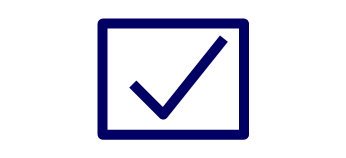You might be surprised to find out that the most common cause of back pain is pushing your body a bit too far while doing everyday activities. Sitting at a computer, lifting heavy objects, even sleeping in a weird position can strain your spine and cause pain.
“The spine is a load-bearing mechanism that is used to lift things, balance and stabilize the entire body,” says Ritu Zacharias, M.D., a physical medicine specialist at Henry Ford Health. “Wherever the spine takes on the most loadbearing force can become a major source for pain.”
While the body can be very good at adjusting for added weight or rotational movements, repeated strain on your spine can cause injury. Even people who are in excellent physical health get injuries from movement repetition, failure to use proper movement techniques or overdoing movements as part of their daily routine.
While Dr. Zacharias reports that low back injuries are the most common complaint she hears from patients, other injuries such as joint dislocation, herniated or slipped discs, muscles tears, or whiplash can contribute to pain points down your back – from the back of your neck, down to the thoracic and lumbar spine, and to your tailbone.
Back pain can impact anyone, but some people are at a greater risk for injury than others. This includes:
- People who have poor muscular health or are not regularly exercising their muscles
- Those with jobs or roles that require repetitive work such as twisting, bending or lifting
- Athletes
- Adults over the age of 55
- People with a previous back injury or surgery
How You Can Avoid Back Pain Or Injury
The best way to prevent back and spine injuries is to pay attention to what your body is telling you.
“We tend to not understand the body’s limit for daily activities and want to power through the pain,” says Dr. Zacharias. “Instead of overdoing it, it is better to stop when you sense pain in order to avoid further injury.”
Try these tips for avoiding pain in the first place:

Back Pain Treatment
- Stay conditioned. Stretching, core exercises and aerobic conditioning can help strengthen your body and put you in a better spot to avoid back pain. If you do injure your back, having a strong core can help.
- Give your body rest. As you work on strengthening your body, it is important to make sure you are also giving your body time to properly recover. Skipping rest days or continuing to push your body too hard can increase your risk for injury.
- Check in with your posture. In a world where many people spend time sitting, working at a desk or scrolling on cellphones, your posture is probably not as good as it should be. Take several moments throughout the day to correct your posture. Make sure you are sitting or standing up straight with your shoulders rolled back and relaxed. (It is common for many people to relax into a position with your shoulders rolled forward with your back hunched.) Your core should be tucked in, allowing your ribs and hips to be aligned.
- Use proper form. As you go about your day, make sure you are moving your body correctly to avoid injury. If you are lifting heavy items, employ your legs and core so the strain is not transferred to your back.
What Should You Do About Chronic Back Pain?
If you have been living with back pain that hasn’t improved slowly over time, make an appointment with your doctor. Dr. Zacharias notes that after about eight weeks of relative rest or conservative treatment, pain should improve. If pain continues or worsens, your doctor can work with you to determine why that pain is still present.
This might include ordering imaging, prescribing medication to manage the pain or beginning physical therapy to strengthen weak or injured muscles. Based on how your body responds to these treatments, your doctor will prescribe a customized plan for treatment.
In some cases, a back injury that does not go away can get worse and cause you to develop other, more serious symptoms. If you experience localized weakness or shooting pain through the arms and legs, lose the ability to move your fingers, or suddenly notice bladder or bowel incontinence, these might be symptoms of a neurological deficit indicative of a serious spinal injury that requires surgery.
“Surgery for the spine is dependent on the location and surrounding structures of the pain location,” says Dr. Zacharias. “If surgery is recommended, advanced spinal imaging may be required to determine the location of your injury. Specialists from orthopedics, physical medicine and neurosurgery can all see patients for spinal surgery.”
Different surgical approaches may be used depending on the severity of your condition. Surgery options include:
- Microdiscectomy: Relieves nerve pressure caused by herniated discs by removing part of the damaged disc.
- Laminectomy: Involves removing parts of the vertebrae to relieve spinal pressure.
- Fusion operation: Surgically connects part of the spine together – streamlining movement and reducing pain.
If you have back pain already, do not ignore your symptoms. Instead, talk with your doctor about ways you can manage your condition and speed up recovery.
Reviewed by Dr. Ritu Zacharias, Director of Physical Medicine and Medical Spine at Henry Ford Heath. She sees patients at Henry Ford Hospital in Detroit and Henry Ford West Bloomfield Hospital.



